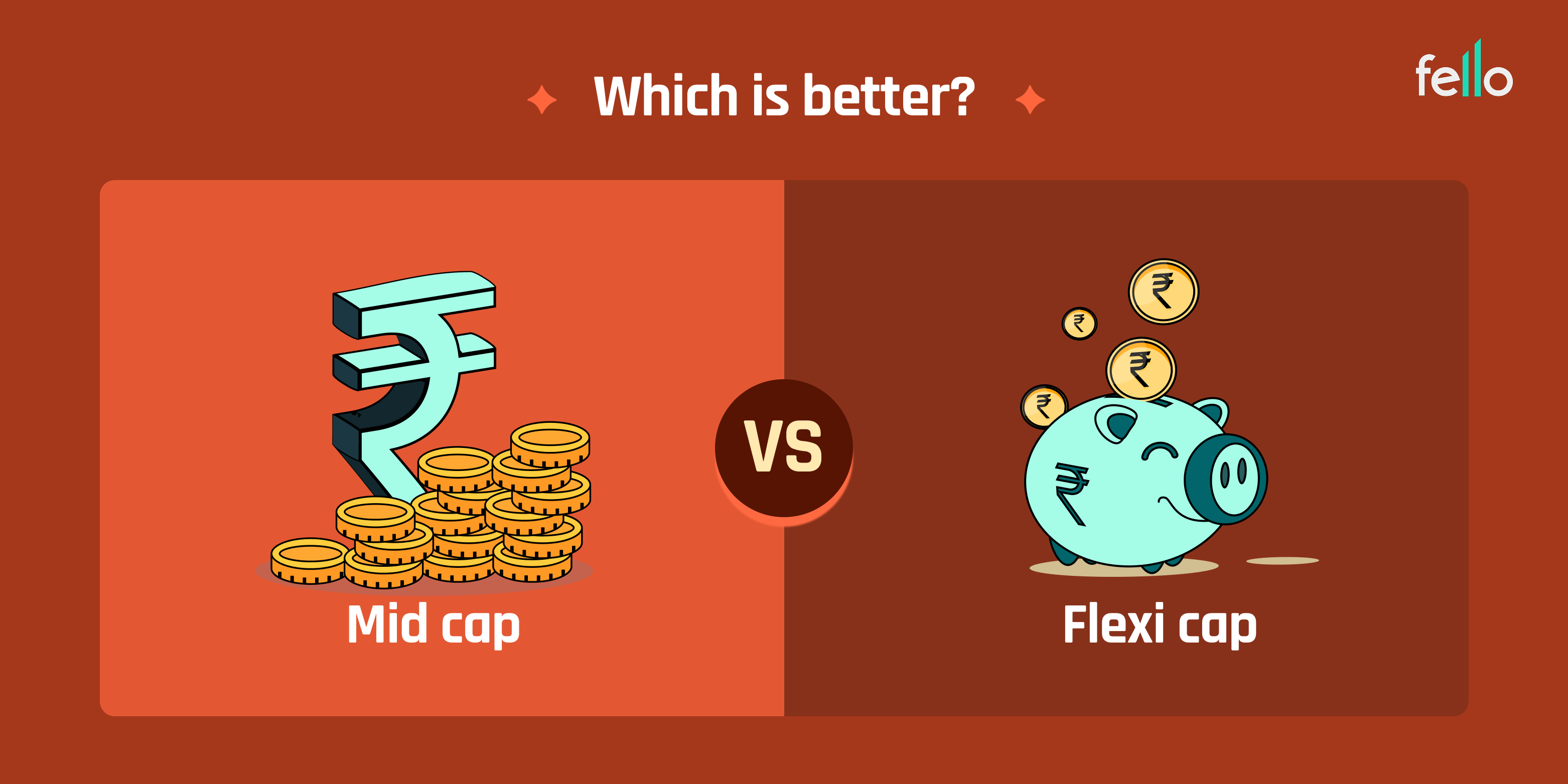When comparing midcap mutual funds and flexicap funds, investors often ask, “Mid Cap vs Flexi Cap? Which is Better?”. This choice depends on your investment horizon, risk appetite, and financial goals. Questions like “Is mid-cap good for long-term?”, “Is flexi cap fund good for 5 years?”, and “What are the disadvantages of flexi cap?” are key to making an informed decision.
Understanding Midcap Mutual Funds
A midcap mutual fund invests primarily in mid-sized companies ranked between 101st and 250th by market capitalisation. These companies often have strong growth potential but may face higher volatility compared to large caps.
Key Features of Midcap Funds:
- Higher growth potential than large caps.
- Higher volatility, especially in short-term market corrections.
- Suitable for long-term wealth creation.
Look for Top 5 Mid‑Cap Funds for 2025
Understanding Flexi cap Funds
A flexicap fund can invest in companies across large-cap, midcap, and small-cap segments, without fixed allocation. Fund managers have the flexibility to shift investments based on market conditions.
Key Features of Flexicap Funds:
- Flexible allocation to manage risk and optimize returns.
- Exposure to multiple market segments.
- Less volatile than pure midcap or small-cap funds.
In a market downturn, a flexi cap fund manager may increase allocation to large caps for stability, while in a bull market, they may tilt towards midcaps or small caps to boost growth.
Here are Top 5 Flexi Cap Mutual Fund in 2025
Table: Mid Cap vs Flexi Cap – Key Differences
| Factor | Midcap Mutual Fund | Flexicap Fund |
|---|---|---|
| Definition | Invests mainly in mid-sized companies (rank 101–250 by market cap). | Can invest in large, mid, and small-cap companies with no fixed ratio. |
| Risk Level | Higher risk due to volatility in mid-sized companies. | Moderate risk due to diversified allocation. |
| Return Potential | High, especially in bullish markets. | Balanced returns with controlled risk. |
| Flexibility | Limited to midcap segment. | High flexibility across market caps. |
| Best For | Investors with high risk tolerance and long-term horizon. | Investors seeking balanced exposure and lower volatility. |
Advantages & Disadvantages
Advantages of Midcap Mutual Funds
- Potential for high returns in a growing economy.
- Exposure to companies with strong expansion opportunities.
- Can outperform large caps over long-term periods.
Table 2: Pros & Cons of Mid Cap vs Flexi Cap
| Fund Type | Pros | Cons |
|---|---|---|
| Midcap Mutual Fund | High growth potential, can outperform in bull markets, good for long-term wealth creation. | High volatility, deeper losses during market crashes, requires patience. |
| Flexicap Fund | Diversified allocation reduces risk, flexible in changing market conditions, suitable for moderate investors. | May underperform pure midcaps in strong rallies, depends heavily on fund manager’s skill. |
FAQs
Is Mid-Cap Good for Long-Term?
Yes, if you have a time horizon of 7+ years, midcaps can compound wealth significantly. But be ready for short-term volatility.
Advantages of Flexicap Funds
- Diversification across market caps reduces risk.
- Active management allows adapting to market cycles.
- Ideal for investors unsure about market timing.
What Are the Disadvantages of Flexi Cap?
- Heavily dependent on fund manager’s allocation skill.
- May not fully capture sectoral rallies if allocation is conservative.
- Returns may be lower than midcaps in a strong bull market.
Which Type of Mutual Fund is Best?
If you prioritise growth potential and can handle volatility, a midcap mutual fund may suit you. If you want balanced returns with lower risk, a flexi cap fund might be better. The choice also depends on your investment horizon.
Is Flexi Cap Fund Good for 5 Years?
Yes, a flexi cap fund is a good option for a 5-year period, as the diversification reduces downside risk. However, for maximum benefit, many experts recommend holding for 7–10 years to ride through full market cycles.
Final Thoughts:
If you’re wondering “Mid Cap vs Flexi Cap? Which is Better?”, the answer depends on your risk appetite, market knowledge, and investment horizon. Midcaps suit aggressive, long-term investors looking for higher returns, while flexi caps are ideal for those who want diversification and adaptability. Evaluate your goals before choosing.

